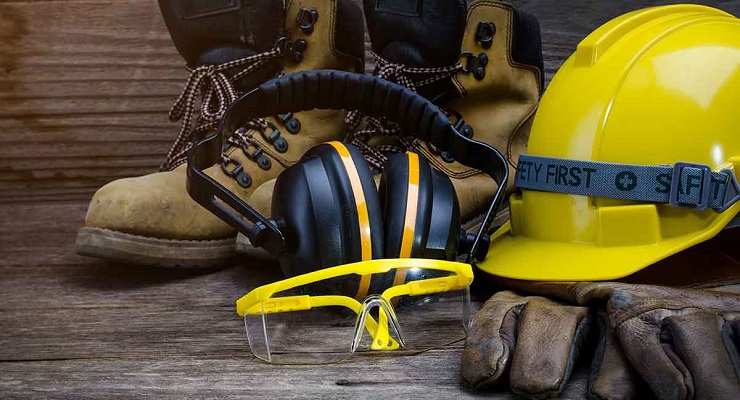Essential Safety Basics for Interior Demolition Projects
Interior demolition projects can be complex and hazardous undertakings that require proper planning, preparation, and safety measures to ensure the well-being of workers and the public. The potential risks involved in these projects are many, from hazardous materials to electrical hazards, structural collapse to confined spaces, and more. It’s crucial for all parties involved in a demolition project to have a comprehensive understanding of essential safety basics to follow.
Important safety guidelines for interior demolition projects include
1). Planning and Preparation
The first step in ensuring demolition project safety is proper planning and preparation for the work ahead. This includes performing a thorough site assessment, identifying potential hazards, and developing a safe work plan. It is also essential to obtain the necessary permits, obtain liability insurance, and make sure that the workers involved in the project are adequately trained and equipped with the required safety gear.
2). Personal Protective Equipment (PPE)
Workers should wear protective equipment such as hard hats, eye protection, gloves, steel-toed boots, and other appropriate PPE. It should be well-maintained and in good condition, as damaged or worn-out PPE can be just as dangerous as having no protection.
3). Hazardous Material Management
Many interior demolition projects may involve the removal of hazardous materials such as lead-based paint, asbestos, and other toxic substances. It is essential to identify these materials before the start of the project and to properly manage them following any federal, state, and local regulations. This may include properly disposing of the materials, properly labeling the containers in which they are stored, and providing workers with the necessary training and equipment to handle them safely.
4). Dust and Debris Management
Demo projects can create a significant amount of dust and debris that can pose health and safety risks to workers and others in the area. It is essential to control dust using proper dust suppression techniques, such as dampening the work area and using vacuum systems to capture the dust. Debris should also be appropriately contained and disposed of per local regulations.
5). Emergency Response Planning
A comprehensive emergency response plan is crucial in case of accidents or incidents during a demolition project. This may include procedures for responding to fires, chemical spills, and other hazards. Workers should be trained in emergency response procedures and have the necessary equipment and supplies, such as fire extinguishers, spill kits, and first aid supplies.
6). Electrical Safety
Interior demo projects often involve removing electrical systems. Workers must take the necessary precautions to prevent electrical hazards, such as shutting off the power to the working area, using proper electrical tools and equipment, and avoiding using electrical equipment in damp (or wet) conditions. Workers should also be trained in electrical safety and be aware of the dangers of electrical shock and arc flash.
7). Structural Safety
Interior demolition can result in the collapse of walls, ceilings, and other structures, posing a severe risk to workers. It’s crucial to assess the stability of the structures being demolished, properly support and stabilize the structures as needed, and take appropriate measures to prevent accidental collapses. Workers should also be thoroughly trained in proper demolition techniques and be aware of the dangers of working in unstable structures.
8). Confined Space Safety
Many interior demolition projects may involve work in confined spaces, such as attics, basements, and crawl spaces. These spaces can be hazardous due to limited access, inadequate ventilation, and other factors. It is essential to properly assess these spaces before entering, to take measures to control any hazardous conditions, and to provide workers with the necessary training and equipment to work safely in confined spaces.
9). Vehicle Safety
Projects may involve using heavy equipment and vehicles, such as cranes, excavators, and dump trucks. It is crucial to ensure that trained and qualified workers operate these vehicles and that they are adequately maintained and inspected. Workers should also be aware of potential hazards by these vehicles, such as the risk of collision or crush injuries, and take appropriate precautions.
10). Noise and Vibration Safety
Demolition can generate a significant amount of noise and vibration, posing health risks to workers and others in the area. It is essential to use noise suppression techniques, such as enclosing the work area or using mufflers on equipment and to provide workers with hearing protection if necessary. Workers should also be aware of the dangers of hand-arm vibration syndrome, resulting from prolonged exposure to vibration from power tools, and take appropriate measures to reduce their risk.
In Summary
interior demolition projects can be safe if proper measures are taken, such as planning and preparation, use of PPE, hazardous material management, dust and debris management, emergency response planning, electrical safety, structural safety, confined space safety, vehicle safety, and noise and vibration safety. Following these steps will ensure that selective demolition projects are completed safely and efficiently while minimizing the potential risks to workers and the public.
Local Demo provides commercial and residential demolition services, ensuring you start your next project with confidence. Our demo team is trained and certified in various safety programs and approaches every project with sincere and surgical forethought.
For more information about our comprehensive demo services, call our professional team today! Our service area includes Gallatin County, Broadwater County, Madison County, Meagher County, Jefferson County, and Park County, Montana.
Get In Touch
Our Location
125 Central Avenue, Unit J Bozeman, MT 59718
Call Us
Phone: (406) 595-0227
E-mail Us
info@ jobsitesolutionsmt .com
Our Service Area
We Service the Following Counties

